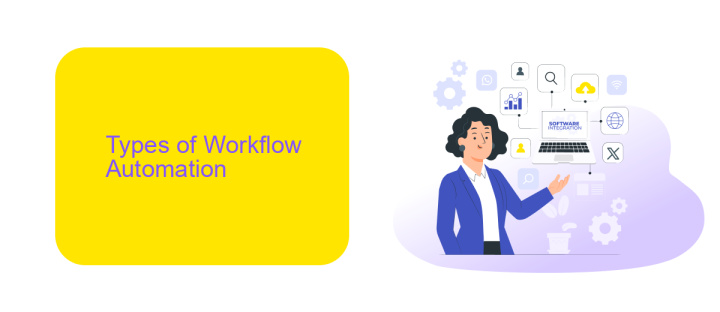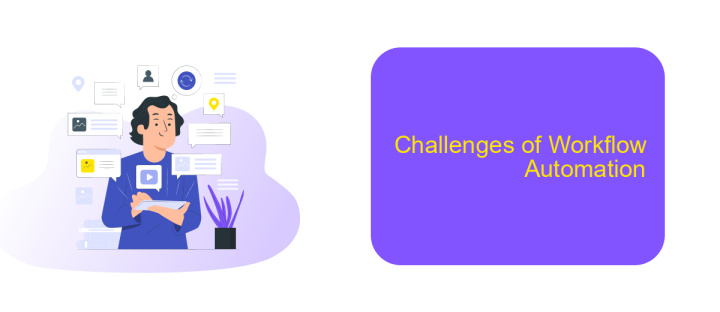Best Workflow Automation
In today's fast-paced business environment, optimizing efficiency is crucial for success. Workflow automation has emerged as a game-changer, enabling organizations to streamline processes, reduce errors, and save valuable time. This article delves into the best workflow automation tools available, helping you choose the right solutions to enhance productivity and drive your business forward. Discover how automation can transform your operations and boost overall performance.
Benefits of Workflow Automation
Workflow automation significantly enhances business efficiency by streamlining repetitive tasks and minimizing human error. By leveraging automation tools, organizations can focus on strategic activities that drive growth and innovation.
- Increased productivity: Automation handles mundane tasks, freeing up employees for higher-value work.
- Consistency and accuracy: Automated processes reduce the risk of errors, ensuring consistent results.
- Time savings: Tasks that once took hours can be completed in minutes, accelerating project timelines.
- Cost reduction: Automation decreases the need for manual labor, leading to significant cost savings.
- Improved compliance: Automated workflows ensure adherence to regulatory standards and company policies.
Integrating various tools and services through platforms like ApiX-Drive further enhances workflow automation. ApiX-Drive enables seamless connections between different applications, allowing data to flow smoothly and processes to operate without manual intervention. This integration capability ensures that all systems work in harmony, maximizing the benefits of automation.
Types of Workflow Automation

Workflow automation can be categorized into several types, each serving different purposes and industries. One common type is task automation, which focuses on automating repetitive tasks such as data entry, email responses, and scheduling. This type of automation helps to reduce human error and frees up time for more strategic activities. Another type is process automation, which involves automating end-to-end business processes like order processing, employee onboarding, and customer service workflows. This ensures consistency and efficiency across the organization.
Integration automation is another crucial type, which connects various software and applications to work seamlessly together. Tools like ApiX-Drive facilitate this by enabling easy integration between different platforms without the need for extensive coding knowledge. This type of automation is particularly beneficial for businesses looking to streamline their operations by ensuring that data flows smoothly between different systems. Lastly, there's robotic process automation (RPA), which uses bots to mimic human actions for tasks such as data extraction and report generation, further enhancing productivity and accuracy.
Best Practices for Implementing Workflow Automation

Implementing workflow automation can significantly enhance productivity and efficiency within an organization. However, to achieve optimal results, it is essential to follow best practices that ensure smooth and effective automation processes.
- Identify Key Processes: Begin by identifying which workflows are most critical and would benefit the most from automation. Focus on repetitive tasks that consume significant time and resources.
- Choose the Right Tools: Select automation tools that align with your business needs. Platforms like ApiX-Drive can be invaluable for setting up integrations and automating workflows seamlessly.
- Test and Monitor: Before full-scale implementation, conduct thorough testing to identify potential issues. Continuously monitor the automated workflows to ensure they are functioning as expected and make adjustments as needed.
- Train Your Team: Ensure that your team is well-trained on the new automated processes. Provide necessary resources and support to help them adapt to the changes.
- Review and Optimize: Regularly review the effectiveness of your automated workflows. Gather feedback from users and look for opportunities to optimize and enhance the automation processes.
By following these best practices, organizations can maximize the benefits of workflow automation, leading to improved efficiency, reduced errors, and increased overall productivity. Utilizing tools like ApiX-Drive can further streamline the integration and automation process, making it easier to manage and optimize workflows.
Challenges of Workflow Automation

Implementing workflow automation can be a complex and challenging process. One of the primary challenges is the initial setup, which often requires significant time and resources. Organizations must thoroughly understand their processes and identify which tasks can be automated effectively.
Another challenge is the integration of various tools and systems. Many businesses use multiple platforms that need to communicate seamlessly for automation to be successful. This often requires specialized knowledge and can be a time-consuming process.
- Identifying the right processes for automation
- Ensuring compatibility between different systems
- Maintaining data accuracy and security
- Training employees to use new automated systems
Services like ApiX-Drive can help mitigate some of these challenges by providing a user-friendly platform for integrating various applications. ApiX-Drive simplifies the process of connecting different tools, making it easier to automate workflows without extensive technical expertise. However, ongoing maintenance and updates are still required to ensure the automation remains effective and secure.
Future of Workflow Automation
The future of workflow automation promises to be transformative, leveraging advancements in artificial intelligence and machine learning to create more intuitive and responsive systems. As businesses continue to seek efficiency, automation tools will become increasingly sophisticated, capable of predicting needs and proactively managing tasks. This evolution will not only streamline operations but also allow employees to focus on more strategic and creative endeavors, driving innovation and growth.
Integration will play a crucial role in this future landscape. Services like ApiX-Drive will be essential for seamlessly connecting various applications and platforms, ensuring smooth data flow and interoperability. By automating these integrations, businesses can reduce the time and effort spent on manual data entry and synchronization. As a result, companies will be able to adapt more quickly to changing market conditions and customer demands, maintaining a competitive edge in an ever-evolving digital economy.
- Automate the work of an online store or landing
- Empower through integration
- Don't spend money on programmers and integrators
- Save time by automating routine tasks
FAQ
What is workflow automation?
How can workflow automation improve productivity?
What types of tasks can be automated?
How do I get started with workflow automation?
What are the benefits of using a tool like ApiX-Drive for workflow automation?
Strive to take your business to the next level, achieve your goals faster and more efficiently? Apix-Drive is your reliable assistant for these tasks. An online service and application connector will help you automate key business processes and get rid of the routine. You and your employees will free up time for important core tasks. Try Apix-Drive features for free to see the effectiveness of the online connector for yourself.


